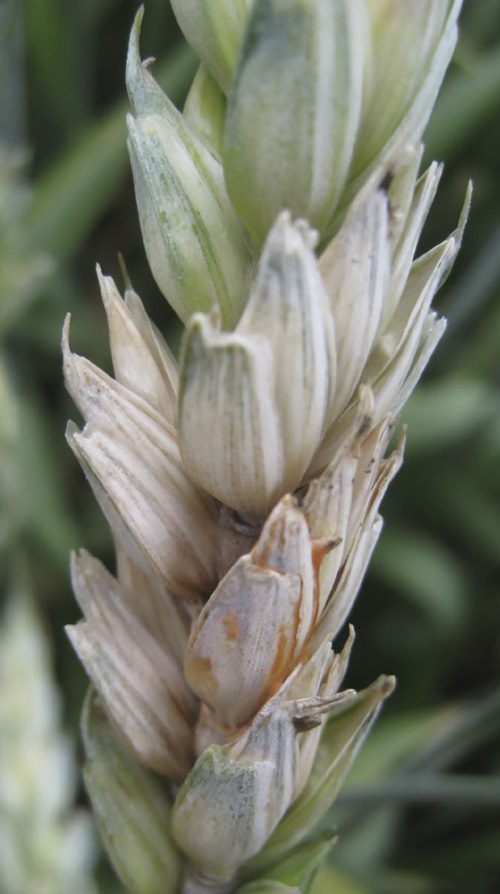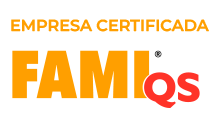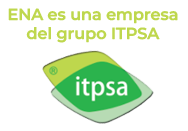Interferences between mycotoxins and antibiotics
ENADETOX®: Interferences between MYCOTOXINS and ANTIBIOTICS
By the technical team of
European Natural Additives, S. L.
Interferences of DON (Deoxynivalenol) in the absorption of hydrophilic antibiotics.
WHAT TO DO?
Deoxynivalenol(Vomitoxin/DON) is atoxin produced by fungi of the genus Fusarium, abundant in several cereal crops(wheat, corn, barley, oats and rye) and processed grains because it is a very stable compound, both during storage, milling and/or pelleting since it does not degrade at high temperatures(Eriksen et Alexander, 1998).
It is produced in temperate climates (25-21 ºC) and its production by fungi is greater when there are situations of high humidity during the flowering season.
Controls carried out in Argentina on 117 random samples of cereals found 62% of samples contaminated with DON (Gaggiotti, M.C et al., 2001), while in the United States, another cereal exporting country, analyses carried out on the 2009 harvest showed average levels of 3 ppm of DON in corn, with the highest level of contamination being 24.9 ppm.
Studies in Europe showed that 82% of the cereal samples analyzed were contaminated, with toxins produced by Fusarium being the most frequent(Monbaliu S, et al.; 2010).
The sensitivity to the presence of this toxin in feed is higher in swine (toxic levels of 2ppm) than in poultry (5 ppm) or ruminants (6 ppm)(Trenholm, HL. Et al.; 1984).
Its toxicity is explained by anorectic effects related to the inhibition of the synthesis of certain proteins in the brain and its immuno-depressant capacity(Pestka, J.J., 2010).

With which antibiotics does DON interfere?
IPEC-J2 cells belong to a non-transformed ciliated epithelial cell line obtained from neonatal piglet mid-jejunum and provide a perfect model to study whether FOS penetration into enterocytes can be affected by the presence of low concentrations of DON in the diet.

The conclusions of this test were that “short-term exposure of cells to a non-toxic concentration of DON (1 ppm) interferes with the pharmacokinetics of FOS. Considering the frequent occurrence of DON in cereal-based foods, which are fed to everyone, the importance of these findings should not be underestimated.”
Antibiotics & Sodium/Phosphate ion transporter dependent
This type of transporters are common to all hydrophilic antibiotics so it is very likely that their intestinal absorption is also affected by the presence of DON in the diet.
In view of current knowledge, we must be extremely cautious to avoid that non-toxic doses of DON may cause failures in the application of antibiotherapy.
Metabolization of DON
DON in swine, unlike in ruminants, is rapidly and almost completely absorbed as it passes through the stomach and proximal small intestine(Dänicke et al., 2013). Almost all of its elimination is through urine, with only 0.7% of this toxin being metabolized by bacteria present at the end of the digestive tract and eliminated in feces(Nagl, V., 2014).
It is partially metabolized by conjugation reactions in the liver and kidneys with glucuronic acid to facilitate its excretion in the urine and bile(Gamage et al., 2006). Approximately 50% of the DON excreted in the urine is in this form(Dänicke et al., 2005), the rest being eliminated as free DON.
Other hydrophilic antibiotics
 β-Lactams (penicillins, cephalosporins).
β-Lactams (penicillins, cephalosporins). Aminoglycosides (streptomycin, neomycin, gentamicin, kanamycin).
Aminoglycosides (streptomycin, neomycin, gentamicin, kanamycin). Glucopéptidos.
Glucopéptidos.
Non-toxic doses of DON can lead to antibiotic therapy failure

Possible strategies for DON control
For the prevention of the toxic and absorption-blocking effect of certain antibiotics, different strategies can be considered, either from the point of view of reducing their intestinal absorption (use of mycotoxin sequestrants or biotransforming agents) or from the point of view of their elimination from the blood (detoxifying agents).
Porous structures such as diatomaceous earth are effective in DON uptake.
ABSORPTION LIMITING FACTORS
 Scientific reports presented by EFSA in 2009 reveal that the capacity of most clays to bind this toxin is quite limited, between 3 – 9%.
Scientific reports presented by EFSA in 2009 reveal that the capacity of most clays to bind this toxin is quite limited, between 3 – 9%. Other porous structures, such as activated carbon or diatomaceous earth (Natour, R.M., 1998. Denli et al., 2009) are effective in trapping these types of toxins.
Other porous structures, such as activated carbon or diatomaceous earth (Natour, R.M., 1998. Denli et al., 2009) are effective in trapping these types of toxins. Yeast walls, through different mechanisms such as the formation of hydrogen bridges, ionic or hydrophobic interactions can reach efficiencies close to 22.9% (Kong, C. et al.; 2014).
Yeast walls, through different mechanisms such as the formation of hydrogen bridges, ionic or hydrophobic interactions can reach efficiencies close to 22.9% (Kong, C. et al.; 2014). Biotransforming agents include enzymes, bacteria or yeasts that, in aqueous media, are capable of modifying the chemical structure of DON.
Biotransforming agents include enzymes, bacteria or yeasts that, in aqueous media, are capable of modifying the chemical structure of DON.
DETOXIFYING AGENTS:
 Some plant extracts, such as artichoke extract, have demonstrated their ability to improve hepatic processes linked to detoxification, both in the activation and conjugation phases(Maros T. et al., 1966; Mortier F. et al., 1976).
Some plant extracts, such as artichoke extract, have demonstrated their ability to improve hepatic processes linked to detoxification, both in the activation and conjugation phases(Maros T. et al., 1966; Mortier F. et al., 1976). On the other hand, knowing that DON is eliminated through the urinary tract, the diuretic effect of artichoke extract (Lattanzio, V., et al. 2009; Ceccarelli, N., et al. ,2010 ) makes it a very interesting strategy for the fight against DON.
On the other hand, knowing that DON is eliminated through the urinary tract, the diuretic effect of artichoke extract (Lattanzio, V., et al. 2009; Ceccarelli, N., et al. ,2010 ) makes it a very interesting strategy for the fight against DON.
Unpublished studies carried out at the University of Murcia on mice show that this diuretic effect is attributable to the flavonoids present in artichoke extract.
In conclusion, we propose, in order to avoid toxic effects or effects linked to the reduction of antibiotic absorption, the use of commercial products containing combinations of strategies to reduce the intestinal absorption of DON together with those that increase its detoxification and elimination through the urinary tract.

RECOMMENDATIONS:
 Prevention of toxic challenges from myco-toxins, heavy metals, herbicides and microorganisms.
Prevention of toxic challenges from myco-toxins, heavy metals, herbicides and microorganisms. Stimulation of bile production and release in the intestine.
Stimulation of bile production and release in the intestine. Optimization of digestion and absorption of nutrients.
Optimization of digestion and absorption of nutrients. Improved fat emulsification and absorption of fat-soluble vitamins.
Improved fat emulsification and absorption of fat-soluble vitamins. Increased Calcium bioavailability. Hepatoprotection and regeneration of damaged liver tissue.
Increased Calcium bioavailability. Hepatoprotection and regeneration of damaged liver tissue. Prevention of fatty liver disease.
Prevention of fatty liver disease.

DOSAGE:
 Premix:
Premix:
- Feed: 0.5-2 kg/ton of feed.
- Unifeed car: 5-20 grams/animal/day.
 Liquid (drinking water): 1 liter/3,000 liters of drinking water.
Liquid (drinking water): 1 liter/3,000 liters of drinking water.


 β-Lactams (penicillins, cephalosporins).
β-Lactams (penicillins, cephalosporins). Prevention of toxic challenges from myco-toxins, heavy metals, herbicides and microorganisms.
Prevention of toxic challenges from myco-toxins, heavy metals, herbicides and microorganisms.


